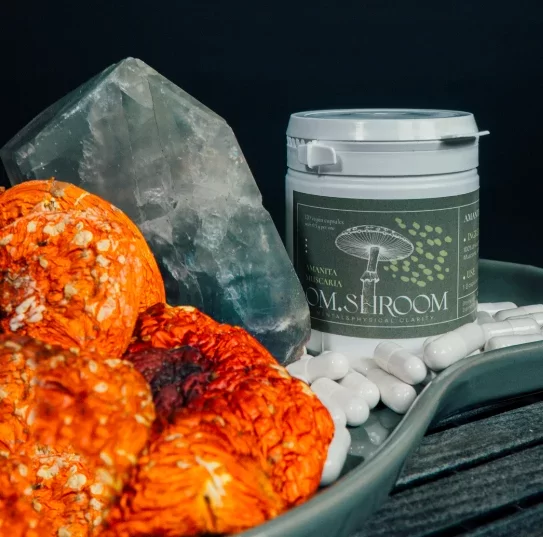Growing and Microdosing Amanita Muscaria: Harnessing the Power of Red Fly Agaric
The Fly Agaric mushroom, also known as Amanita Muscaria, is a distinctive fungus with its fiery red cap dotted with white warts, straight out of a fairy tale scene. Growing this type of mushroom is a fascinating journey of mycology and if done responsibly, can also contribute to the trending practice of microdosing.
To start growing Amanita Muscaria, you need to get your hands on some spores. Spores can be gathered from mature mushrooms or purchased from a reputable supplier. Once you’ve procured your spores, prepare a suitable growth medium. A mix of sterilized hardwood sawdust and straw provides a hospitable environment for the growth of this type of mushroom.
Inoculate the growth medium with the spores, ensuring that the process is carried out in a sterile environment to prevent contamination. Following this, maintain the growing conditions at an ideal temperature of around 20°C with a high level of humidity. It’s important to be patient, as the growth process can take several weeks to a few months. Once fully matured, these red fly agaric mushrooms are ready for harvest.

Harvesting needs to be done with care; cutting the mushroom from the base rather than uprooting ensures the longevity of the mycelial network. Post-harvest, the mushrooms can be dried to increase their shelf life and make them suitable for later use. If you’d prefer to purchase ready-to-use fungi, Omshroom.eu offers dried Amanita Muscaria of high quality.
Now, let’s delve into the intriguing practice of microdosing. This involves consuming small amounts of a substance, enough to gain benefits without experiencing a full-blown psychedelic trip. Microdosing Amanita Muscaria has been reported to enhance creativity, focus, mood, and overall mental well-being. While it’s less studied than microdosing substances like psilocybin, many users report positive effects.
However, it’s important to remember that Amanita Muscaria is a powerful mushroom and contains potent compounds like muscimol and ibotenic acid. Care should be taken while determining the dose, and starting with very small amounts is recommended. Keep in mind that each person’s tolerance can vary and what works for one may not work for another.
If you choose to microdose, bear in mind the importance of regular breaks. Known as „Cycles of Amanita Supplementation Protocol” (CASP), it suggests microdosing for a certain period followed by an equal or longer off-period. This strategy is meant to prevent tolerance build-up and maintain the mushroom’s efficacy.
While the potential benefits of Amanita Muscaria microdosing are significant, it’s crucial to approach it with responsibility, knowledge, and caution. Always do your own thorough research or consult with an expert before starting a new regimen.
In conclusion, growing and microdosing Amanita Muscaria can be a fulfilling process, offering a deep understanding of this remarkable mushroom and possibly enhancing mental health and well-being. By cultivating and using responsibly, we can tap into the natural powers of this intriguing fungus while respecting its potential.

